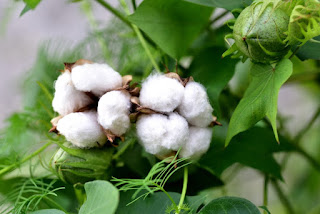Chick Pea Oneliner - Agronomy Important Q & A For All Competitive Exam
1. Origin of chick pea: India, south West Asia.
2. Botanical name of chick pea: Cicer arietinum
3. Family of chick
pea: leguminaceae/papilonaceae
4. Chick pea fruit is known as Pod.
5. Germination of chick pea: Hypogeal.
6. Chromosome number of chick pea: 2n=14,16
7. Critical stage of chick pea: Pre flowering and pod development.
8. Post borer is a most important pest of gram.
9. Gram seed sowing 8-10 cm for to avoid wilt disease.
10. Other name of chick pea: Gram, Bengal
gram, chana.
11. Protein in green gram: 21%
12. Green gram is Known
as king of pulse crops.
13. Gram is an important source of Fe, Ca, Niocin.
14. Blood purify factor is present
in gram.
15.Germinated seed of gram is used for scurvy disease.
16.The sour taste of leaves due to presence of malic acid (90-96%) and oxalic acid (4-10%)
17. Chick pea is a long day and self pollinated
crop, C3 plant.
18. Ground Nut - Tap root system
19.Water requirement of chick pea: 300-350 mm
20. Seed multiplication ratio of chick pea: 1:10
21. Desi (cicer arietinum) is a-
- Desi is small seeded
- Angular shaped edge
- Shape like chickens head.
- 90% of the world‘s cultivated 460. C.N. 2n=14
- Test weight: 140-200g
22. Kabuli ( cicer kabulium) is a
- Kabuli, large and round seeded with white pale cream seed coat
- Duration 90-180 days
- CO 2, CO 3, CO 4 are 90days
- C. N. 2n=16
- Test weight: 340-375g
23.
Temperature required to chick pea: 15-20 C
24. Seed rate of chick pea-Early: 75 -80 kg/ha, Late: 80-100 kg/ha.
25. Depth of sowing of chick pea: 8-10 cm
26. Spacing required for chick pea: 30x10 cm
27. Nipping: Plucking the apical buds of the crop at about 30 to 40 DAS is done to stop the apical growth.
28. Nipping promotes the lateral branching, plants to become more vigorous and produce more vigorous and produce more flowers and pods and yield per plant is increased.
29. The chemical is used for nipping TIBA (tri iodo benzoic acid) 75ppm. Also it can be done by flock of sheep.



